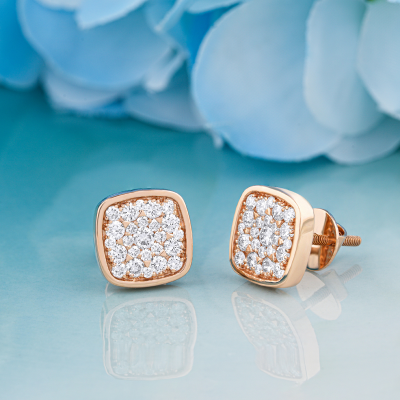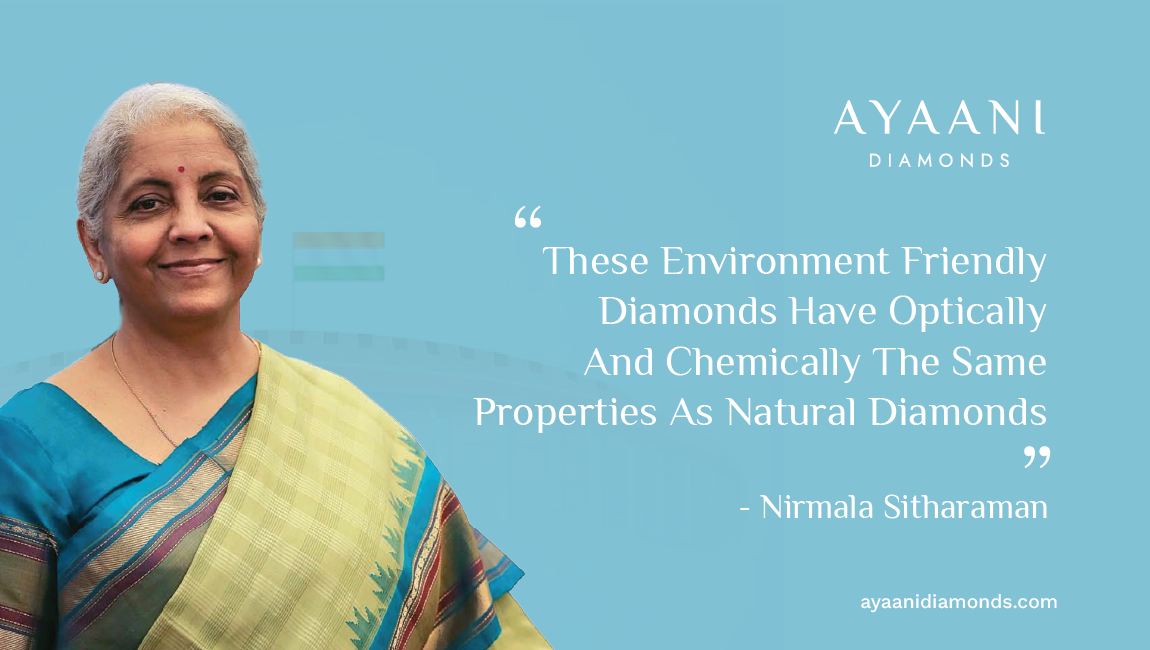Introduction To The World Of Lab Grown Diamonds
Diamonds are considered a symbol of love, commitment, and timeless beauty, making them a popular choice for engagement rings and other jewelry. But with the increasing demand for diamonds, the traditional mining industry is facing challenges in terms of sustainability, ethical concerns, and cost. That's where lab-grown diamonds come in.
The term "lab-grown diamonds" refers to diamonds that have been produced using advanced technology in a laboratory. These diamonds are chemically, physically, and optically identical to mined diamonds, but are produced in a controlled environment that reduces the impact on the environment and allows for a more ethical and sustainable source of diamonds.
Recently, FM Nirmala Sitharaman, the Finance Minister of India, mentioned lab-grown diamonds in her budget speech, recognizing their potential as a game-changer in the diamond industry. During her budget speech, she announced the government’s move to focus on lab created diamonds. She also added that lab grown diamonds have a bright future and will soon become a cornerstone of the global diamond market.
In this article, we'll delve deeper into what lab-grown diamonds are, how they are made, and what sets them apart from mined diamonds.
What are Lab-Grown Diamonds?
Lab-grown diamonds, also known as cultured diamonds, are diamonds that are grown in a laboratory setting using advanced technology. They are made by recreating the high-pressure, high-temperature (HPHT) conditions that occur naturally in the earth's mantle or by using chemical vapor deposition (CVD) techniques. In both processes, carbon atoms are arranged in a crystal lattice, creating a diamond.
The resulting diamonds are chemically, physically, and optically identical to mined diamonds, making them virtually indistinguishable from natural diamonds. This means that lab-grown diamonds have the same physical and optical properties as mined diamonds, including their hardness, refractive index, and thermal conductivity.
How are Lab-Grown Diamonds Made?
There are two main methods for producing lab-grown diamonds: HPHT and CVD.
HPHT Method
The HPHT method involves recreating the high-pressure, high-temperature conditions that occur naturally in the earth's mantle. In this process, a small diamond seed is placed in a carbon-rich material and subjected to extreme heat and pressure, causing the carbon to grow into a diamond crystal. This process can take anywhere from a few weeks to several months, depending on the size of the diamond.
CVD Method
The CVD method involves using chemical vapor deposition to grow diamonds. In this process, a substrate is placed in a chamber where a mixture of gases, including carbon, is introduced. The gases are then excited by heat or a plasma, causing the carbon to deposit onto the substrate and form a diamond crystal. This process can also take several weeks to several months, depending on the size of the diamond. Also learn about lab grown diamonds.
What Sets Lab-Grown Diamonds Apart from Mined Diamonds?
There are several key differences between lab-grown diamonds and mined diamonds that set them apart. These differences include:
Environmental impact: Lab-grown diamonds are produced in a controlled environment, reducing the impact on the environment compared to traditional mining practices.
Ethical concerns: Lab-grown diamonds eliminate the ethical concerns associated with traditional diamond mining, such as human rights abuses and exploitation of workers.
Cost: Lab-grown diamonds are typically more affordable than mined diamonds due to the reduced cost of production.
Availability: Lab-grown diamonds can be produced in a controlled environment, allowing for a more consistent and reliable supply of diamonds.
Why are Lab-Grown Diamonds Becoming More Popular?
Lab-grown diamonds have been around for several decades, but in recent years, they have become increasingly popular among consumers. Lab-grown diamonds are chemically, physically, and optically identical to mined diamonds, but they are produced in a controlled laboratory environment using cutting-edge technology. In this article, we will explore the reasons behind the growing popularity of lab-grown diamonds and how they compare to mined diamonds.
Ethical Benefits of Lab-Grown Diamonds
Another reason why lab-grown diamonds are becoming more popular is their ethical benefits. Consumers are becoming increasingly conscious of the social and environmental impact of their purchasing decisions, and they are looking for alternatives to traditional diamond sourcing methods that are more responsible and sustainable.
Quality Benefits of Lab-Grown Diamonds
Finally, lab-grown diamonds are becoming more popular because they offer quality benefits over mined diamonds. Lab-grown diamonds are produced in a controlled laboratory environment, which allows for more precise control over the quality of the diamond. They are often cleaner, clearer, and more uniform in size and shape than mined diamonds. Additionally, lab-grown diamonds are available in a wider range of colors, including rare and unique shades that are not typically found in mined diamonds.
Conclusion
Lab-grown diamonds are becoming more popular for a variety of reasons, including their environmental benefits, ethical benefits, cost benefits, and quality benefits. They are a viable alternative to mined diamonds for consumers who are looking for a diamond that is more sustainable, responsible, and affordable. Whether you are looking for a diamond engagement ring, a special piece of jewelry, or just a beautiful gem, lab-grown diamonds offer a range of benefits that make them an excellent choice.
Experience the brilliance and beauty of ethically-sourced, environmentally friendly diamonds with Ayaani’s lab grown diamond jewelry, which is crafted with utmost care and advanced technology by our brand.










